How to Dry Mushrooms? 6 Simple Ways to Dehydrate Mushrooms
Starting in mid-summer, until late fall, mushrooms appear in forests. Rainy days and warm nights boost their intense and abundant growth. Mushroom hunting in the woods is not only a very relaxing activity, but also a possibility to cook something delicious. Drying mushrooms is a very popular way to store these tasty treats. How to do it? Learn the best methods for dehydrating mushrooms.
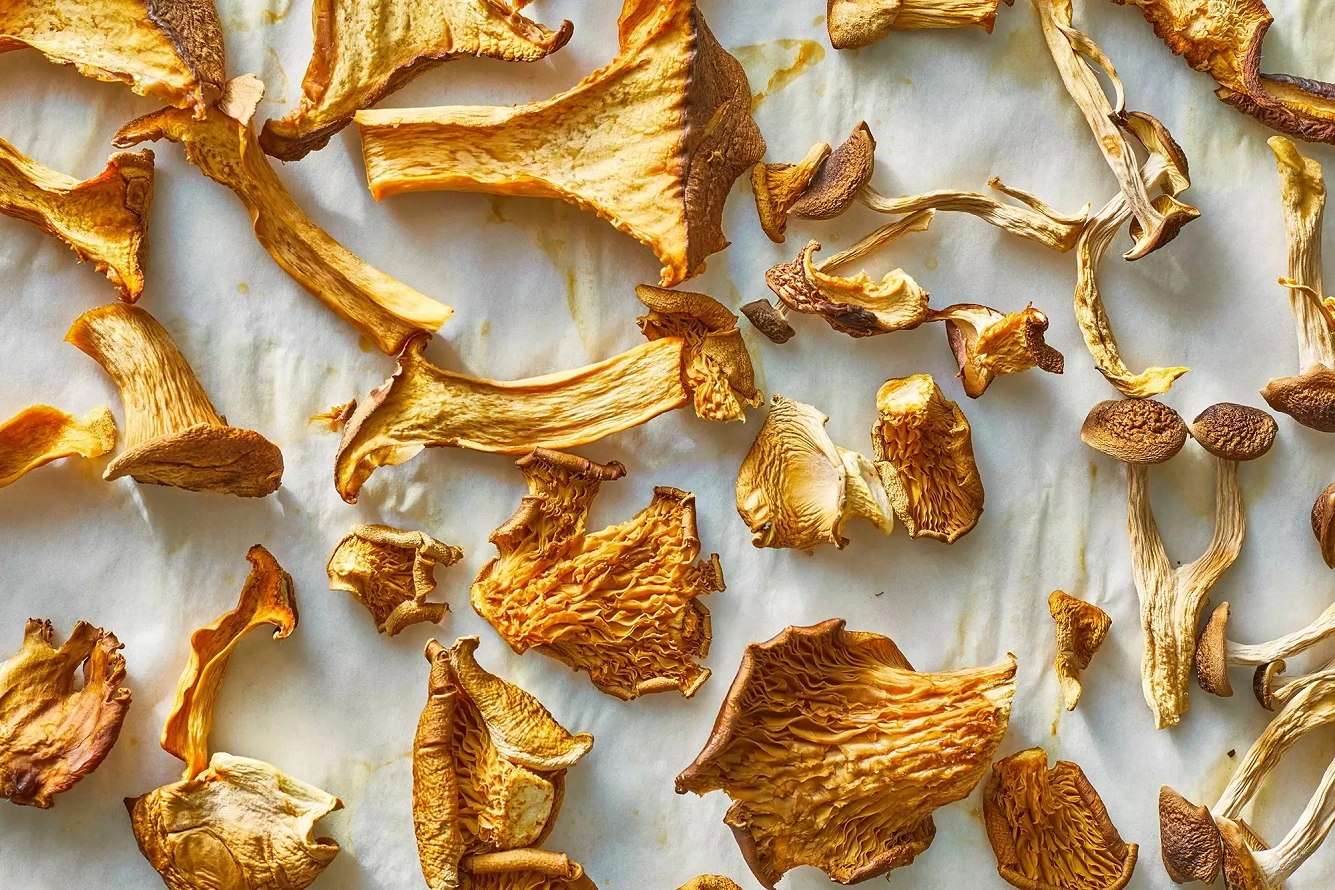
Why drying mushrooms?
Drying mushrooms is one of the best ways to store them conveniently for a long time. During this process, excess water is removed from recently picked mushrooms by evaporation. Thanks to drying, mushrooms keep their best taste and aroma, which is difficult to achieve by pickling. The time needed for a full dehydration is the most important factor. Dry mushrooms are perfect for meat-based dishes but also for pastas and soups. Just a few pieces can bring out the meal’s unique taste.

How to use dried mushrooms?
Dried mushrooms are a perfect addition to many recipes. If you pick and dry them yourself, they taste even better than the frozen ones purchased at a store. You can use them in:
- dumplings,
- ravioli,
- hunter’s stew,
- borscht,
- mushroom soup,
- cabbage dishes.
Dried mushrooms are obligatory ingredients in many Christmas dishes. They are also used in sauces to achieve the characteristic flavor, which is difficult to recreate without them. Here’s another curious idea for dry mushrooms – breaded porcini caps. The caps have to be thoroughly dried, and then whenever you crave the unusual snack, you can just take them out and prepare. Pan-fried, they taste delicious, as if freshly picked.
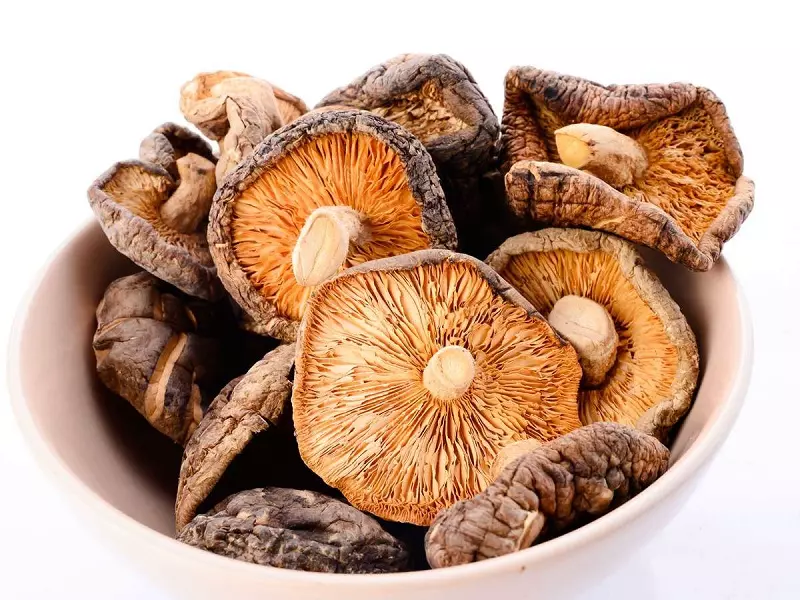
Are all mushrooms suitable for drying?
Basically all mushrooms can be dried. Depending on the available possibilities, you can decide between various methods. Dehydrating mushrooms in a food dehydrator is one of the most convenient ways. Drying mushrooms in an oven with fan assistance is equally effective, but one has to be careful not to burn them during the process.
Each edible mushroom can be dehydrated. But note that depending on the species, it can have different water content. This affects how long it takes to dehydrate the mushrooms. We recommend sorting them out by their type. This way, you can avoid a situation when a part of the mushrooms has already dried, while others are still wet.
How to correctly prepare mushrooms for drying
Drying mushrooms is a convenient way to store them, but before you can begin the process, you should prepare them. First, thoroughly clean them from dirt such as:
- sand,
- moss,
- forest litter remains.
A small knife and a brush will be useful. Note that mushrooms prepared for drying cannot be washed, so the preparation process takes much longer. Because of their structure, mushrooms absorb water, which would make it more difficult, or even impossible to dry them.
Cutting the mushrooms properly is also very important. If they are meant to be dried, the slices should be larger, as they will shrink during the process. Cut each mushroom along the stalk, without separating the cap and the stem.
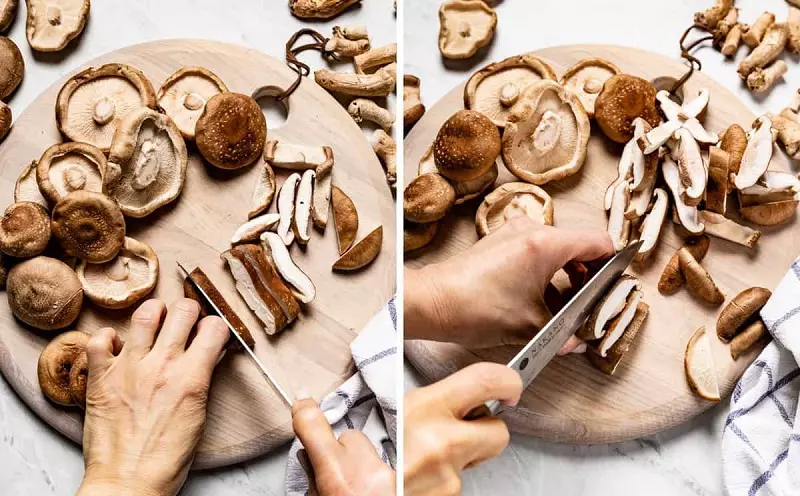
How to dry mushrooms in a dehydrator?
Drying mushrooms in a food dehydrator is currently one of the most convenient and fastest ways. It has even replaced another highly popular method – drying mushrooms on a string. Small mushrooms can be dried whole in the device. Larger ones should be cut in half, and if the mushroom is very big, you can divide it into four parts.
Depending on the dehydrator model, it might offer several sections on which you can easily spread out the mushrooms. Warm air generated by the dehydrator is pumped upwards by fans located at the bottom. When picking a device for drying mushroom, pay attention to the maximum temperature it can generate. Noteworthy models achieve a temperature of 70-80°C (158-176°F), thanks to which you can dehydrate mushrooms in just 6 hours. The minimum drying time differs depending on the mushrooms’ species and sizes.
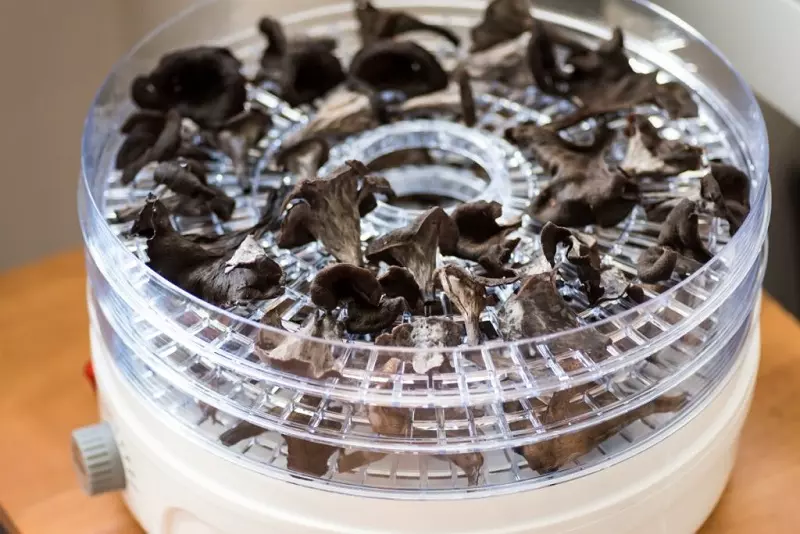
How to dry mushrooms in an oven?
Drying mushrooms in a convection oven is a very convenient solution. Such ovens are present in most households, so if you have it, you don’t have to purchase any additional equipment to dry your mushrooms. Note that when drying mushrooms in the oven, you have to set a correct temperature. The mushrooms have to be dehydrated, but not baked – that’s where convection comes in handy. The temperature cannot be too high; a relatively low range of 40-50°C (104-122°F) is the best option.
If you spread the mushrooms on a solid baking tray, make sure to reposition them from time to time. Drying mushrooms in an oven takes from 4 to 5 hours. Leave the oven’s door ajar after the process, so the mushrooms don’t get damp.
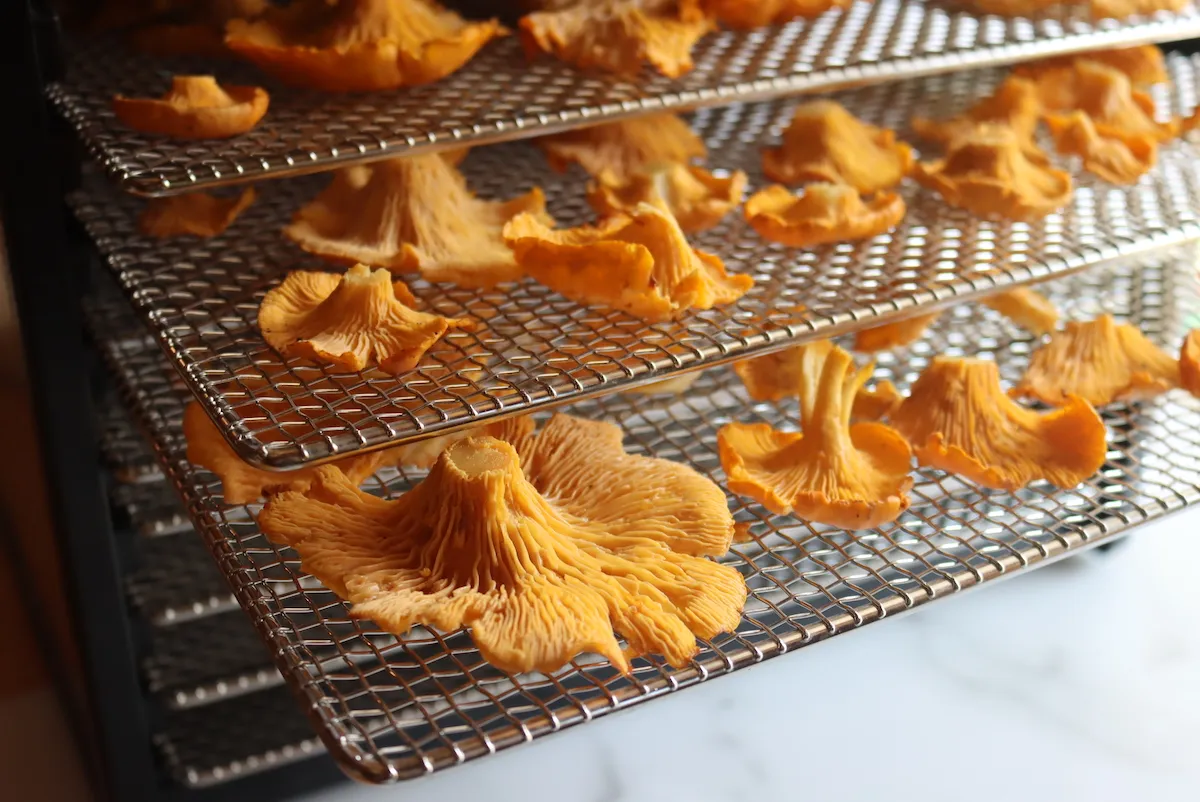
Drying mushrooms in a microwave oven
A microwave oven is a very universal device – it can be used to dry mushrooms as well. Dehydrating mushrooms in a microwave requires a 100 W device, which is able to remove the moisture thoroughly. It’s important to run this process in several phases. First, set the microwave for a few minutes. Open the door afterwards to release the steam. Repeat it a few times. Note that drying mushrooms in a microwave oven is one of the most difficult methods. In addition, mushrooms dried this way don’t keep as much of their aroma and flavor as when dried in a dehydrator or an oven.
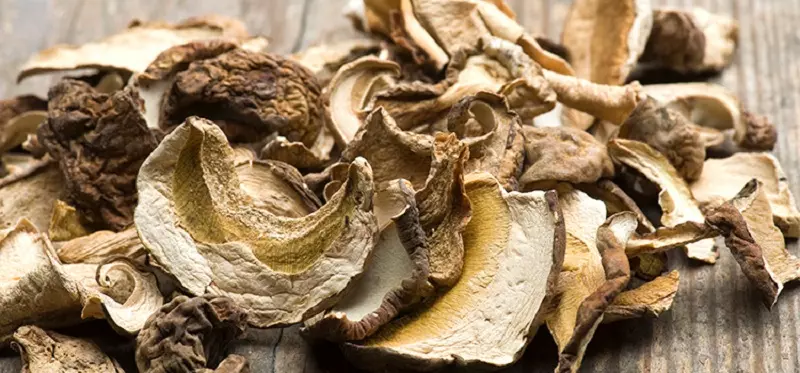
Preparing sun dried mushrooms
Drying mushrooms in the sun has been a very common method not so long ago. Its popularity resulted mostly from the lack of other options. Currently, this method of dehydrating fungi is becoming obsolete – mostly because it’s a time-consuming process. It can be done only during sunny and cloudless days. If the mushrooms are left outside for too long, they might absorb moisture from the air, which might cause them to mold. This way, you might lose the entire harvest in one afternoon.

Drying mushrooms on a string
Air-drying mushrooms on a string is one of the oldest methods. Sliced mushrooms should be strung onto a thread, keeping spaces between each slice. The string should be thick enough, so it doesn’t break under the mushrooms’ weight. Also, make sure not to string too many mushrooms on one thread. Drying mushrooms with this method requires a good weather, as they need to be exposed to the sun. You can also hang them next to a fireplace – its warmth speeds up the drying process.
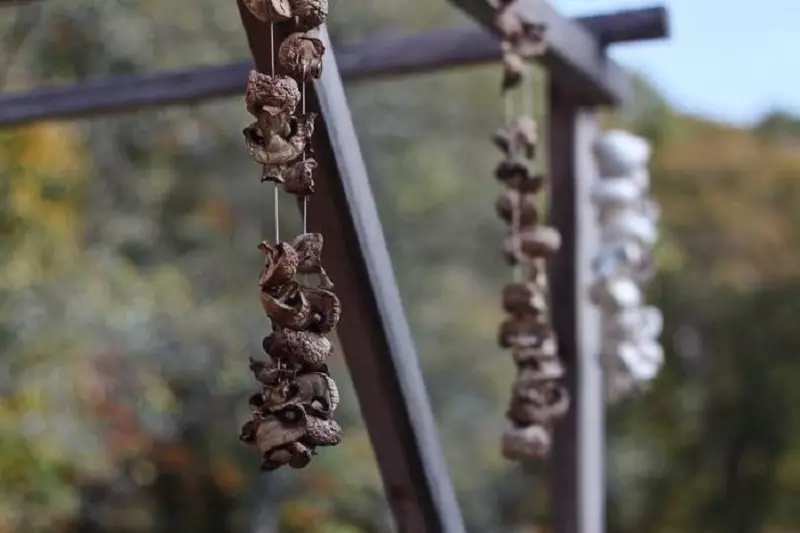
Drying mushrooms on a radiator
Mushrooms can also be dried using a radiator. The method is highly recommended to those who have no other options, when colder days result in stronger heating in houses and apartments. Spread some parchment paper on the radiator, and put sliced mushrooms on it. Then cover them with gauze. The heater’s temperature is crucial here – if needed, decrease it. Check the mushrooms from time to time to make sure they don’t stick to the paper.
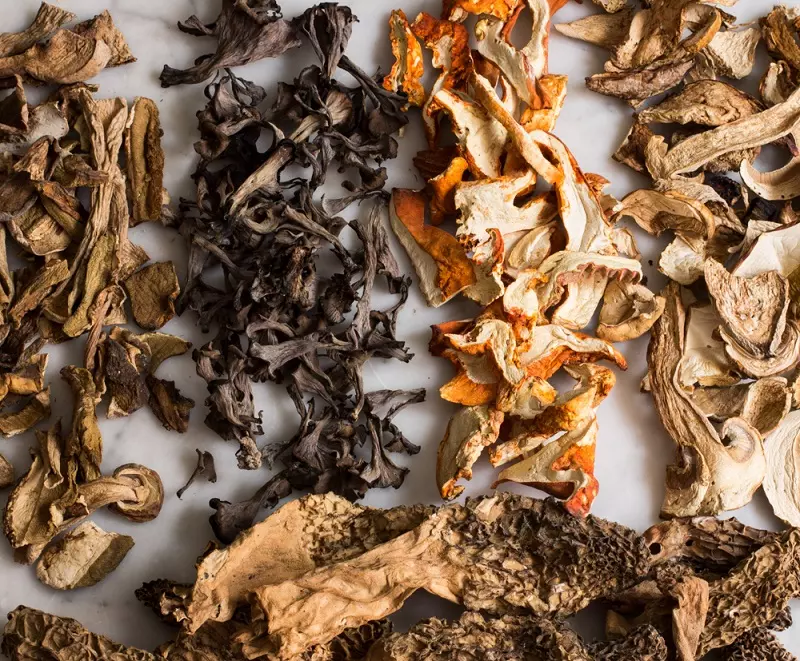
📍 How long does it take to dry mushrooms in a dehydrator?
Drying mushrooms in a dehydrator is considered one of the most effective methods. Mushrooms dried in a food dehydrator take about 6 hours to get completely dry. It's not recommended to dehydrate mushrooms for a shorter time. Properly dried mushrooms should break under the pressure of a finger.
📍 How to dehydrate mushrooms in an oven – what's the best temperature?
Using an electric oven is one of the many methods for drying mushrooms. Make sure not to set a too high temperature – the mushrooms have to be dehydrated but not baked. 40 to 50°C (104-122°F) is the most optimal temperature. Drying mushrooms in a convection oven is the most popular solution.
📍 Which mushrooms can be dehydrated?
All mushrooms can be dried. But keep in mind that only three species are the quickest to dry and taste best after the process. They are _Leccinum_, Porcini and _Xerocomus_ mushrooms.
📍 How to check if mushrooms are properly dried?
Ending the process at the right moment is a key element of drying mushrooms. You can recognize the mushrooms are properly dried when they are not too soft nor too hard to the touch. They should break under a stronger pressure from fingers. Overly dried mushrooms break right away. Mushrooms that are not dehydrated enough crumble.
Featured articles




